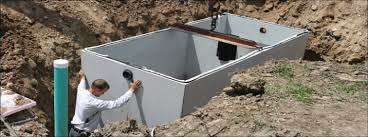Disclosure: This post contains affiliate links, meaning we may earn money or products from the companies mentioned in this post if you purchase a product through one of our links. An example would be Amazon.
Is WD-40 Safe For Your Septic Tank?
WD-40 is among the most common household degreasers, and you probably hadn’t ever thought about whether you should be using it or not until you had a home with a septic tank. In this post, we will discuss how WD-40 affects your tank, besides checking out other information that helps you maintain a healthy septic system.
So, is WD-40 safe for septic tank? The short answer is No, WD-40 is not safe for your septic system, as it harms the bacteria in the tank.
Continue reading to find out why WD-40 is harmful for a septic system, how to pick a safe toilet cleaner, what other chemicals you should never send down the drain and how to maintain a healthy septic tank.

Why WD-40 Is Not Safe For Your Septic Tank?
Above we mentioned that WD-40 is bad for a septic system. To understand the WHY behind it, you must first understand how septic tank works.
Your septic system contains a whole ecosystem of living organisms that enables it to function the way it is meant to. Large colonies of bacteria and enzyme present in the septic tank prevent it from backing up by taking care of scum and sludge. While bacteria decompose the sludge, enzymes work on the scum.
These microbes breakdowns the waste and convert it into liquid and gasses. This process, in turn, allows a septic system to effectively push the wastewater into the drainfield.
However, some chemicals spell doom for healthy bacteria residing in your septic tank. One such chemical is petroleum oil, and unfortunately, WD-40 is made from it.
If WD-40 goes down the drain, it will kill bacteria, but that’s only half of it. Petroleum oil is non-degradable and toxic. So, it’s only a matter of time before traces of WD-40 find their way into someone’s drinking water supply.
To cut a long story short, don’t use WD-40 if you use a septic system. It is bad for your septic tank and the environment.
How to Pick a Safe Toilet Cleaner?
WD-40 is a big no-no if you use a septic system, but that doesn’t mean you have to put up with a dirty toilet. There are many toilet cleaners that take good care of your toilet bowl and seat without harming your tank. With help of these tips, you will have no trouble picking such a type of toilet cleaner.
- Say no to Cleaners with Harsh Chemicals
Don’t fall clever marketing tactics and flashy words that toilet cleaners’ manufacturers use to lure customers. Instead, read the label carefully and avoid any cleaner with harsh chemicals.
That begs the questions: Which chemicals are labeled “harsh” for a septic tank?
The two biggest culprits are hydrochloric acid and bleach. That said, you can use them in moderation. For instance, according to Clorox website, three-fourths of cup of bleach per wash is safe to use.
However, in high amounts, these chemicals can wreak on your septic system. According to a report published by University of Arkansas, just 1.85 gallons of chlorine bleach can kill almost all of the bacteria in a 1000-gallon septic tank in a short period.
In case you do decide to use a cleaner with harsh-chemicals, ensure you wear gloves, eye protection, and appropriate clothing while cleaning. That’s because some products can cause skin irritation or damage to your eyes.
- Natural Toilet Cleaners Are a Good Option
The safest way to clean toilets is using natural cleaners such as baking soda, lemon juice, or white vinegar. If you want, you can always create a natural toilet cleaner yourself. Some recipes include citric acid, dried up spices, or alcohol.
Natural cleaners are not only non-toxic and eco-friendly but also very affordable. Plus, they are just as effective as chemical-based products in maintaining a spotless toilet bowl and seat.
- Go for Green Toilet Cleaners
At the middle of the spectrum are mild toilet cleaners, which are also a good option since they are environmentally-friendly and provide efficient cleaning.
Look for products labeled biodegradable, non-toxic, and eco-friendly. These products will ensure you don’t harm your septic system, pollute underground water or unnecessarily expose your family to harsh chemicals.
According to the Environmental Protection Agency (EPA), green cleaners that don’t have petroleum-based solvents are the safest to use. Their website also offers you the option to check whether the product you have shortlisted is eco-friendly or not.
What are Other Toxins You Should Never Flush Into Your Septic System?
In addition to WD-40, there are many other household cleaning products that can foul up your septic system. Listed ahead are half-a-dirty-dozen products you must not send down the drain if you are serious about keeping your tank in prime condition.
- Quaternary Ammonia
Quaternary ammonia compounds like alkyl benzyl ammonium chloride are extremely difficult to break and can be toxic to the ecosystem of a septic system. For this reason, give quat compounds the cold shoulder and use natural cleaners instead. Names of natural cleaners that are a good option include borax, vinegar, baking soda,.
- Antibacterial Soaps
Did you know the use of antibacterial or disinfectant products harms both good and bad bacteria in the septic system? Therefore, try to avoid them as much as you can. Opt for natural cleaners since they help maintain a healthy ecosystem in your septic tank.
- Drain Cleaners
These cleaners work by dissolving the clog with harsh chemicals. However, the downside is they also kill the bacteria and good enzyme in your septic system that break down waste.
In case the plug is in the elbow below the sink, you may well be able to fix the issue by taking apart the plumbing and thoroughly cleaning it. If that doesn’t work, try a plunger.
- Powdered Laundry Detergent
You must keep away from powdered detergents because they contain substances that dam up the drainfield, such as clay, sodium, and other extenders. As an alternative, use a liquid laundry detergent, but make sure it has no phosphates and low levels of surfactants. Find a list of safe laundry detergent here.
- Liquid Fabric Softener
Always read the label before buying a liquid fabric softener. Most liquid fabric softener brands are petroleum based and release oil into your septic system. Many also contain quaternary ammonium compounds, which, as said earlier, are extremely bad for microbes of a septic system.
On the other hand, plant-based fabric softeners are eco-friendly and hence are a great option. Alternatively, you can use vinegar, which is not only an excellent fabric softener but also keeps your washer smelling fresh and clean. Simply add one-fourth cup of white vinegar to a fabric softener ball or the fabric softener dispenser.
- Pain and remodeling products
You should not flush paints (including paint thinners and latex), varnishes, and stain cleaners into the drain because they kill good bacteria and pollute the groundwater.
How to Maintain a Healthy Septic Tank?
Avoiding WD-40 and other products listed above, while necessary, is not enough to maintain a healthy septic system. You must also clean your tank once every three to five years. If yours is a big household or if your tank is smaller than normal, you should pump it out more frequently.
Regulating the volume of household wastewater that flows out daily into your septic system goes a long way in prolonging its life. If you consistently send more water into tank than it can handle, things may soon take a bad turn. You may start experiencing all sorts of issues, like wastewater backing up or bad odor inside the home.
Here are some tips that help you effectively keep a tab on the quantity of wastewater you generate:
- Install high-efficiency toilets – Newer toilets are gentler on your septic tank, as they use 1.6 gallons of water per flush. In comparison, older toilets can use up to 5 gallons per flush. Here are a list of septic friendly toilets.
- Maximize washing machine loads – Running large load cycles only makes things harder for your septic system. A far better option is to either run full loads or adjust the water level according to the size of the load. Find out how many loads of laundry you should run.
- Spread your laundry over the whole week – Doing seven loads of laundry on Saturday is not the same as spreading the load over the whole week.
Related Questions to Is WD-40 Safe for Septic Tank?
Is Vinegar Safe for Septic Systems?
Yes, it is. Vinegar is an all-natural ingredient that doesn’t have any negative effect on your septic tank’s bacteria and enzymes, which are responsible for breaking down the waste and ensuring the system works they way it is meant to.
Is Bleach Bad for Your Septic Tank?
Chlorine bleach when used in moderation is not harmful for your septic tank. However, too much of it going down the drain can spell doom for your tank’s ecosystem and prevent your system from working efficiently.
What Cleaning Products are Safe for Septic Systems?
Baking soda, OxiClean, Borax, Vinegar (white vinegar and apple cedar vinegar) are some of the products that are very good cleaning agents and septic-system safe. Septic Friendly Products List.
Resources:
https://askinglot.com/is-wd-40-safe-for-septic-tank
https://www.paradisevalleyseptic.com/keep-your-septic-system-healthy-by-avoiding-the-dirty-dozen/


